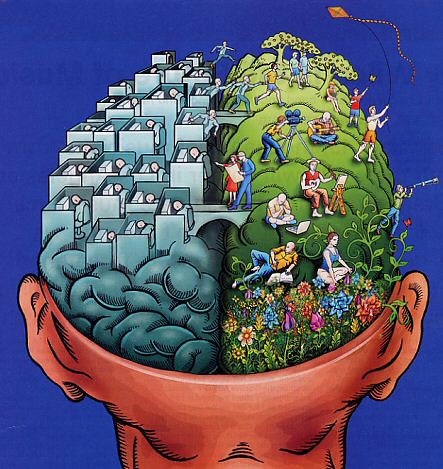 The Leadership Challenge by James Kouzes and Barry Posner assists people in furthering their abilities to lead others in order to get extraordinary things done. Every person has the capacity to develop the necessary skills and character qualities to reach a level of measurable leadership effectiveness. Leadership is defined at the outset as “the art of mobilizing others to want to struggle for shared aspirations.”
The Leadership Challenge by James Kouzes and Barry Posner assists people in furthering their abilities to lead others in order to get extraordinary things done. Every person has the capacity to develop the necessary skills and character qualities to reach a level of measurable leadership effectiveness. Leadership is defined at the outset as “the art of mobilizing others to want to struggle for shared aspirations.”
The central thesis of the book is that leaders are at their best when they participate at a heart level in five key areas. Each chapter deals with these areas on a philosophical level and proceed to give practical suggestions on how to implement these principles. Further, embedded in the five fundamental practices of effective leadership are behaviors that serve as the basis for learning to lead. The authors call these the Ten Commitments. These five fundamental areas of effective leaders as well as the Ten Commitments are spelled out below.
First, leaders are at their best when they challenge the process. Kouzes and Posner suggest that effective leaders constantly challenge the status quo. They are never satisfied and consistently monitor progress; they push for excellence. Leaders are change agents who do not change merely for the sake of change but for the purpose of propelling the organization into the future. “So leaders must challenge the process precisely because any system will unconsciously conspire to maintain the status quo and prevent change” write Kouzes and Posner.
Second, leaders are at their best when they inspire a shared vision. Vision is defined as “an ideal and unique image of the future.” The two Commitments that help leaders accomplish the above are envisioning an uplifting and ennobling future and enlisting others in a common vision by appealing to their values, interests, hopes and dreams.
The third essential quality of leadership is enabling others to act. The central idea is to promote cooperative goals, seek integrative solutions and build trusting relationships. It follows then, that the two Commitments that enhance this quality is fostering collaboration by promoting cooperative goals and building trust. as well as strengthening people by empowering them.
The fourth plank in the book is modeling the way. DWYSYWD is an essential step in this process: “Do What You Say You Will Do.” Three ideas saturate this section. They include, 1) Clarify personal values and beliefs and those of others, 2) Unify constituents around shared values and 3) Pay attention constantly to how self and others are living the values. The two Commitments that drive this important aspect of the leadership challenge include setting the example by behaving in ways that are consistent with shared values and achieving small wins that promote consistent progress which builds commitment.
Fifth, effective leaders encourage the heart of constituents. These leaders make a practice of building self-confidence through high expectations, connect performance and rewards and carry a positive attitude through the day. The last two Commitments that enhance this process include recognizing individual contributions and regularly celebrating team accomplishments.
The final chapter crystallizes the content of the book by reviewing the central propositions and by proposing practical application. While the first twelve chapters make for excellent reading, chapter thirteen is worth the price of the book. Kouzes and Posner present a matrix that serve to help leaders grow in their abilities. The matrix suggests that leaders grow in three significant ways: First, they grow through a process of trial and error. They experience hardships, job experience and job assignments that help them develop as leaders. Here they learn new skill sets in the school of hard knocks. Second, they grow educationally. Effective leaders engage in formal training and education to enhance their leadership abilities. It is recommended that leaders spend a minimum of fifty hours annually on personal and professional development. Third, they grow by observation. They develop key relationships and learn from personal mentors. They also learn by observing bad examples, i.e. other people in the organization that exhibit poor behavior, a lack of integrity, etc.
The Leadership Challenge is a tremendous book. Every pastor pursuing kingdom purposes should read this book. While the material is written from a secular perspective, many of the principles are transferable to the local church context. The book is highly readable, practical and encouraging. The broad research base that is utilized in the book add to its credibility.
I plan on visiting The Leadership Challenge again and again. I anticipate utilizing the principles in ministry and sharing them with other leaders and pastors. My ministry will only be stronger by studying this book!
4.5 stars
 “ They promised me nine years of safety but only gave me three. Today my time has run out.”
“ They promised me nine years of safety but only gave me three. Today my time has run out.”

 My eyes feast on the cover, the title, the design. My hands become claws around the rectangle and I bring the wad of meticulously cut paper to my nose. I inhale and breathe in that virgin emanation of a brand new book, almost utterly untouched from the printer to my wrists. Graceful and fluid I carefully open the protective jacket and begin to fan the pages close to my face, still high from the inhale of the newness. I feel my heartbeat pick up. In just a few short moments I will be curled up on my couch and whisked away to another’s reality, entering back into my own only when I deem necessary.
My eyes feast on the cover, the title, the design. My hands become claws around the rectangle and I bring the wad of meticulously cut paper to my nose. I inhale and breathe in that virgin emanation of a brand new book, almost utterly untouched from the printer to my wrists. Graceful and fluid I carefully open the protective jacket and begin to fan the pages close to my face, still high from the inhale of the newness. I feel my heartbeat pick up. In just a few short moments I will be curled up on my couch and whisked away to another’s reality, entering back into my own only when I deem necessary.
 Now that everything seems to be up and running on here and the blog is doing well, I’ve decided to incorporate a few daily traditions on here. They’re certainly nothing serious nor are they set in stone, most likely life will get in the waand they may be delayed a few days but the proposed ideas are as follows-
Now that everything seems to be up and running on here and the blog is doing well, I’ve decided to incorporate a few daily traditions on here. They’re certainly nothing serious nor are they set in stone, most likely life will get in the waand they may be delayed a few days but the proposed ideas are as follows-
 Theology and Culture: A Guide to the Discussion, D. Stephen Long (Eugene: Cascade Books, 2008). 114pp.
Theology and Culture: A Guide to the Discussion, D. Stephen Long (Eugene: Cascade Books, 2008). 114pp. 
 The book was published late last year. It looks at this problem from another angle again and makes an impressive contribution to the debate. It is The Master and his Emissary by Ian McGilchrist. I am only just about a quarter of the way through but am already mightily impressed.
The book was published late last year. It looks at this problem from another angle again and makes an impressive contribution to the debate. It is The Master and his Emissary by Ian McGilchrist. I am only just about a quarter of the way through but am already mightily impressed.

 ‘Sister Carrie’ is about an eighteen year old young woman who leaves her family and small town in Wisconsin to go to the booming city of Chicago in the 1890s. Her family is so poor that they can’t give her any money beyond the train ticket, but she does have a married sister who lives in Chicago with whom she moves in. Her married sister and husband are also extremely poor, so Carrie must get a job. She gets a job with one of the magnificent new department stores in Chicago at the time, but they pay her so little she can’t buy anything in the store. All Carrie’s experience at the luxurious department store does is make Carrie want more out of her poverty-stricken life. Her sister’s husband expects Carrie to give most of her meager income to him and his wife. She escapes from her sister’s family by moving in with a pleasant young man she had met on the train to Chicago named Drouet. Later she meets a married man named Hurstwood who has a devastating impact on her life.
‘Sister Carrie’ is about an eighteen year old young woman who leaves her family and small town in Wisconsin to go to the booming city of Chicago in the 1890s. Her family is so poor that they can’t give her any money beyond the train ticket, but she does have a married sister who lives in Chicago with whom she moves in. Her married sister and husband are also extremely poor, so Carrie must get a job. She gets a job with one of the magnificent new department stores in Chicago at the time, but they pay her so little she can’t buy anything in the store. All Carrie’s experience at the luxurious department store does is make Carrie want more out of her poverty-stricken life. Her sister’s husband expects Carrie to give most of her meager income to him and his wife. She escapes from her sister’s family by moving in with a pleasant young man she had met on the train to Chicago named Drouet. Later she meets a married man named Hurstwood who has a devastating impact on her life. Raven’s Ladder by Jeffrey Overstreet
Raven’s Ladder by Jeffrey Overstreet Jeffrey Overstreet is the author of The Auralia Thread, the fantasy series which begins with Auralia’s Colors, a thrilling adventure twice-nominated for a Christy Award, and Cyndere’s Midnight. He is an award-winning film critic and columnist, his work appearing in many publications including Image and Paste. He is also the contributing editor for Seattle Pacific University’s Response magazine.
Jeffrey Overstreet is the author of The Auralia Thread, the fantasy series which begins with Auralia’s Colors, a thrilling adventure twice-nominated for a Christy Award, and Cyndere’s Midnight. He is an award-winning film critic and columnist, his work appearing in many publications including Image and Paste. He is also the contributing editor for Seattle Pacific University’s Response magazine. Lady Carliss and The Waters of Moorue by Chuck Black
Lady Carliss and The Waters of Moorue by Chuck Black Chuck Black, a former F-16 fighter pilot and tactical communications engineer, is the author of ten novels, including the popular Kingdom series. He has received praise from parents across the country for his unique approach to telling biblical truths. His passion in life is to serve the Lord Jesus Christ and to love his wife, Andrea, and their six children. He lives with his family in North Dakota.
Chuck Black, a former F-16 fighter pilot and tactical communications engineer, is the author of ten novels, including the popular Kingdom series. He has received praise from parents across the country for his unique approach to telling biblical truths. His passion in life is to serve the Lord Jesus Christ and to love his wife, Andrea, and their six children. He lives with his family in North Dakota.







